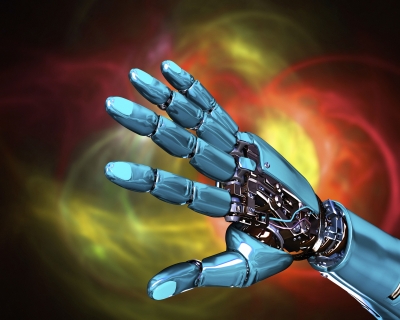One of the hottest therapeutic toys for people with dementia looks like a stray from the North Pole. Paro is a fur-covered robot that resembles a seal pup. To some of residents of Vinson Hall Retirement Community in McLean, Paro has become a beloved creature. “You know what he does? He talks to me sometimes,” said Mary Sherrill Durham, 80, who was waiting to hold the robot. “I talk to him, and he says, ‘How do you do?'” After the robot settled into her lap, Durham bent to its face, peered into its eyes and talked to it as someone might talk to a dog or cat. The robot squealed, squirmed, batted its long, black eyelashes and flopped its tail in response. It is programmed to respond, in a fashion, cooing as one strokes its fur. Durham, a psychologist who wrote several books, including “It’s All Right to Write: How Famous Authors Overcame the Same Roadblocks You Face,” has memory troubles. She spoke about Paro as if it were a living creature. So did Clyde Brantley, 81, who wept with joy after Paro was placed in her lap. “I love her. And she speaks,” Brantley said. Others seemed to recognize that Paro was a man-made creature, and yet it did not seem to matter. To a nation in love with iPods and cellphones, maybe it does not seem so unusual that people would fall in love with a gadget. The robot was 12 years in the making at National Institute of Advanced Industrial Science and Technology, where robots are widely used as aides and pets. Its inventor, Takanori Shibata, thought Paro would be useful in engaging children in pediatric wards and alleviating the behavioral disturbances of adults with dementia. Heather Whyte, director of health services at Vinson Hall, saw Paro at the Kennedy Center this year and brought back a brochure. Marcia Twomey, director of development, e-mailed Shibata in Japan right afterward. Paro appeared at Vinson Hall on March 16, and the community now has five of the devices. Whyte and Twomey knew that patients with severe memory loss are sometimes prone to psychiatric disturbances, including hallucinations and personality changes, and that Paro might provide a way to calm them or at least shift their mood. Twomey said the robot has been an icebreaker for elderly residents without dementia in Vinson Hall’s independent-living apartments. As in other retirement communities, residents who have recently moved from homes in neighborhoods where they have lived most of their adult lives can sometimes have difficulty making friends. Vinson Hall, founded in 1969, has apartments for independent seniors who have served in the military or have been sponsored by someone in the military. It also has two assisted-living units, one of which specializes in working with people with dementia that do not require military affiliation. Kathleen L. Martin, a retired rear admiral who heads Vinson Hall, said she suspects Paro produces such a powerful emotional effect because it stimulates the senses on different levels and seems to communicate with people. It elicits feelings of compassion and pleasure that animals do. But unlike a living animal, it is not threatening, she said, and it just seems to touch some people the way that other people cannot. “Even though Paro is a machine, once he starts responding and moving, you almost go back to thinking about your pet, your dog or cat or neighborhood,” Martin said. “And he’s soft and cuddly. And let’s face it, we’re not soft and cuddly.”
Resources:
http://articles.washingtonpost.com/2008-10-02/news/36855240_1_takanori-shibata-robot-paro
http://jacobreneurship.blogspot.com/2010/05/paro-therapeutic-seal-robot.html




